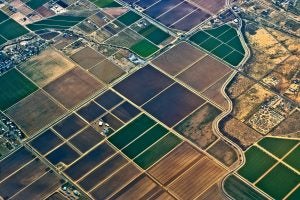A recent study published in Environmental Research Letters reveals that about 30 million acres of U.S. cropland have been abandoned since the 1980s.
The analysis highlights the significant environmental and economic potential of these lands, which have been abandoned at a rate of over a million acres per year between 1986 and 2018.
Using satellite data and information from the U.S. Agriculture Department, researchers mapped the locations of abandoned cropland and tracked how long it had been out of use. They found that during the study period, approximately 30.39 million acres of cropland went unused in the contiguous United States.
The study identified several regions with significant cropland abandonment. The Ogallala Aquifer region, spanning parts of Colorado, Kansas, Nebraska, New Mexico, Oklahoma, South Dakota, Texas, and Wyoming, saw substantial land abandonment due to groundwater depletion from excessive pumping and droughts. Other notable areas of abandonment included Mississippi, the Atlantic Coast, North Dakota, northern Montana, and eastern Washington State.

The fate of the abandoned cropland varied:
- Grassland and Pasture: About 53% of the abandoned cropland transitioned to grassland and pasture.
- Shrubland and Forest: 18.6% became shrubland and forest.
- Wetlands: 8.4% converted to wetlands.
- Non-vegetated Lands: 4.6% became non-vegetated lands.
- Recultivated or Unclassified: The rest was either recultivated or could not be classified.
The average annual rate of cropland abandonment was 1.26 million acres.
Interestingly, the study found that less than 20% of the abandoned land was enrolled in the USDA Conservation Reserve Program (CRP), which pays farmers to remove environmentally sensitive land from agricultural production to prevent soil erosion, habitat loss, and water quality degradation.
“A lot of the assumptions were that this former cropland had a lot of overlap with formal conservation programs,” said Tyler Lark, an assistant scientist at the University of Wisconsin-Madison’s Center for Sustainability and the Global Environment and co-author of the study. “But we saw that they’re almost entirely distinct pools.”
Understanding the locations and status of abandoned cropland allows researchers and policymakers to analyze how these lands might be better utilized in the future. The study suggests that cropland abandonment is expected to persist, providing opportunities for climate mitigation strategies, such as bioenergy production, natural vegetation restoration, and solar photovoltaic development.
The study’s method and results may further support further research on cropland abandonment’s environmental and socioeconomic impacts and its potential uses for climate mitigation and other purposes.


